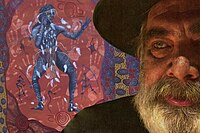IND/Indigenous Health and Well Being Today
In 2006-2010, the age-standardised death rate for Indigenous people was 1.9 times the rate for non-Indigenous people. And this is despite the fact that between 1991 and 2010, there had been a 33% reduction in the death rates for Indigenous people in WA, SA and the NT (MacRae et al, 2013).
Infant mortality rates remain higher for Indigenous infants, and in 2003-2005, maternal mortality ratios were 2.7 times higher for Indigenous women than for non-Indigenous women. Indigenous people are also more likely to suffer from psychological distress, and are almost twice as likely to be hospitalised for mental or behavioural disorders as the rest of the Australian population.
‘The reasons why the health of Indigenous people is worse than that of non-Indigenous people are complex, but represent a combination of general factors (like education, employment, income, and socioeconomic status) and factors having to do with the health sector (like not having access to culturally appropriate services or support)’ (Australian Indigenous HealthInfoNet (2013).
Whilst a complex issue, the underlying factors of the health problems confronting many Aboriginal individuals and communities today can be directly traced to historical policies and actions which resulted in Indigenous dispossession, institutionalisation and socio-economic marginalisation. In this way the events of the past two hundred years of Australia's history have ensured that Aboriginal ill-health transcends the responsibility of the individual and medical science to be a political, social and economic issue.
Thus when seeking answers to the health problems of Indigenous Australians it is necessary to go beyond mere medical solutions to address in unison the underlying inequalities from which the health problems of Aboriginal people have emerged to create the poor health status they now experience. Such an approach is both holistic and in keeping with the principles of social justice and human rights. These principles provide an ideal framework in which to develop strategies to improve Aboriginal health and well being while enabling Aboriginal empowerment and self-determination through social, economic and political equality.
In seeking to address Indigenous health problems, the Commonwealth and states governments have committed to policies under the umbrella of ‘closing the gap’. There have been some improvements over the past five years but:
| “ | ‘closing the gaps’ in health and other disadvantages will not be achieved in the short to medium-term. Achievement of the necessary improvements in the health and well being of Indigenous people will depend largely on a long-term commitment by all Australian governments. This commitment will need to include strategies that fully address health services and the social and other factors that affect the health disadvantages faced by Indigenous people (MacRae et al, 2013). | ” |
